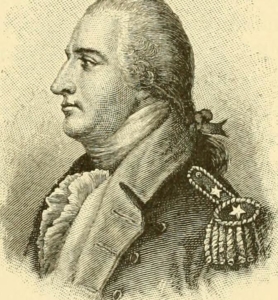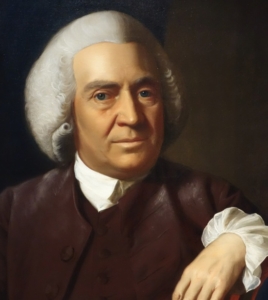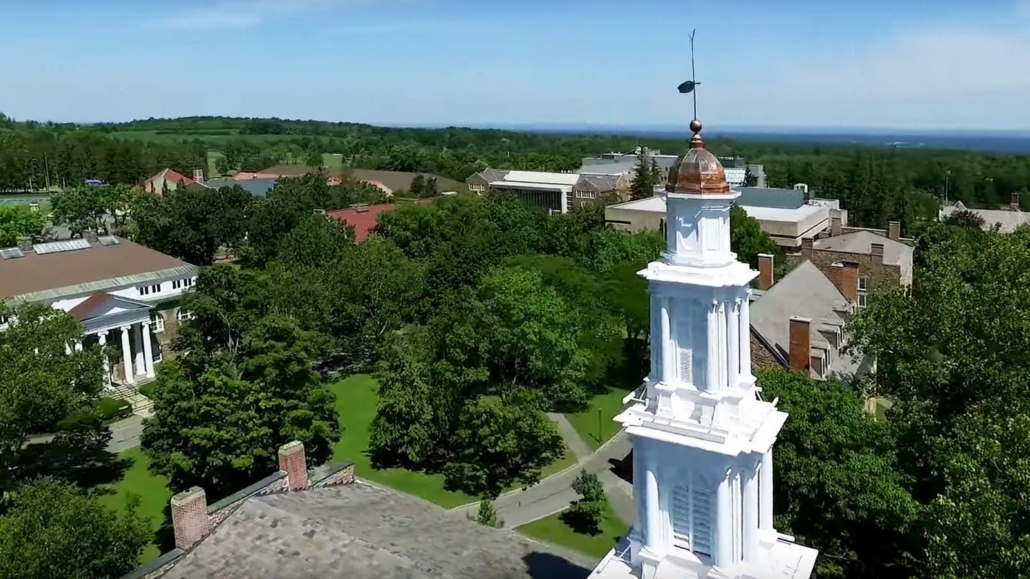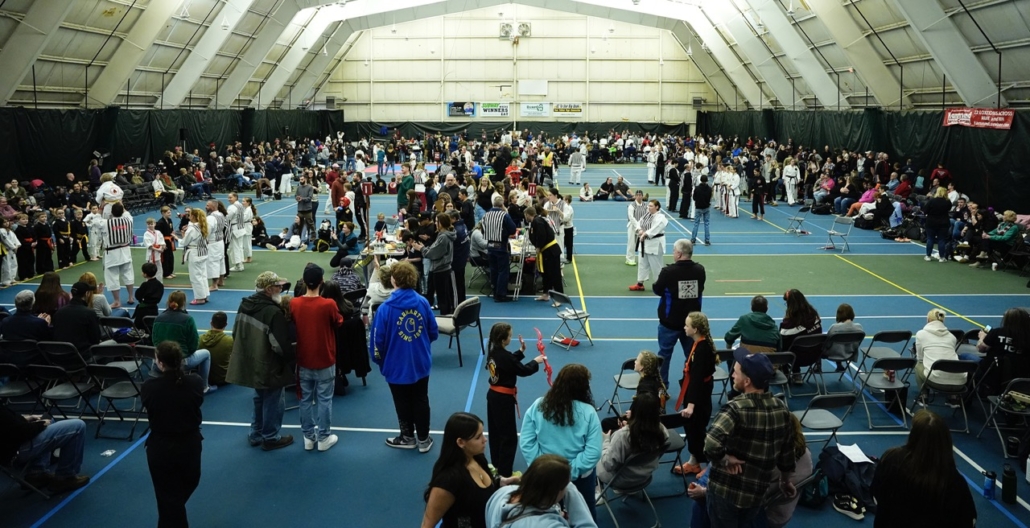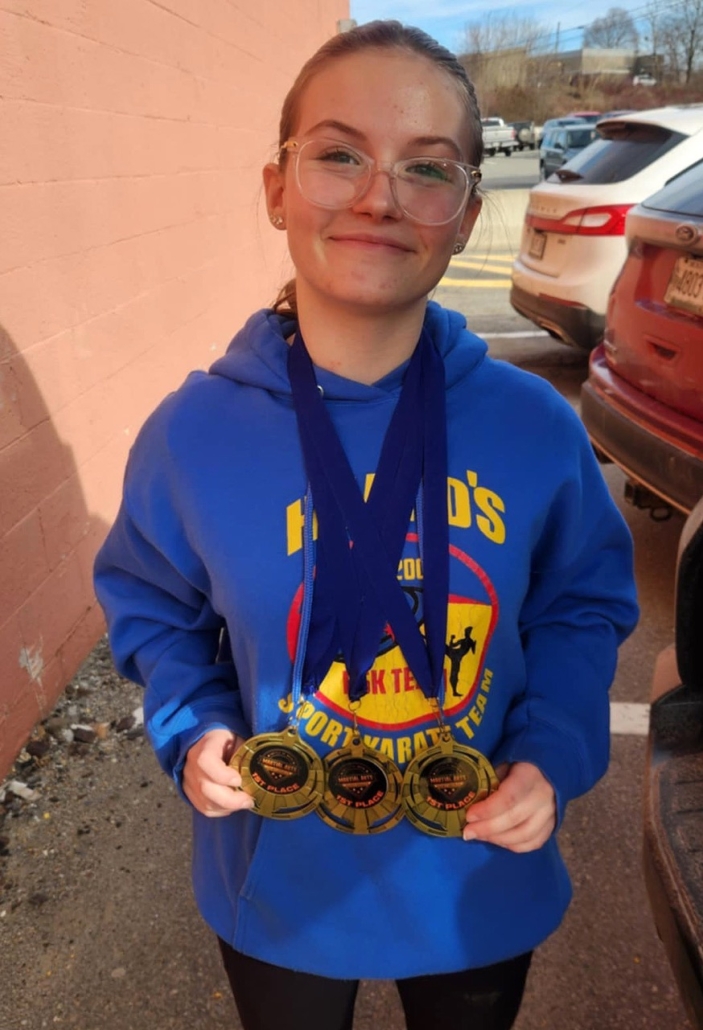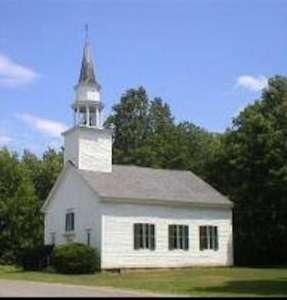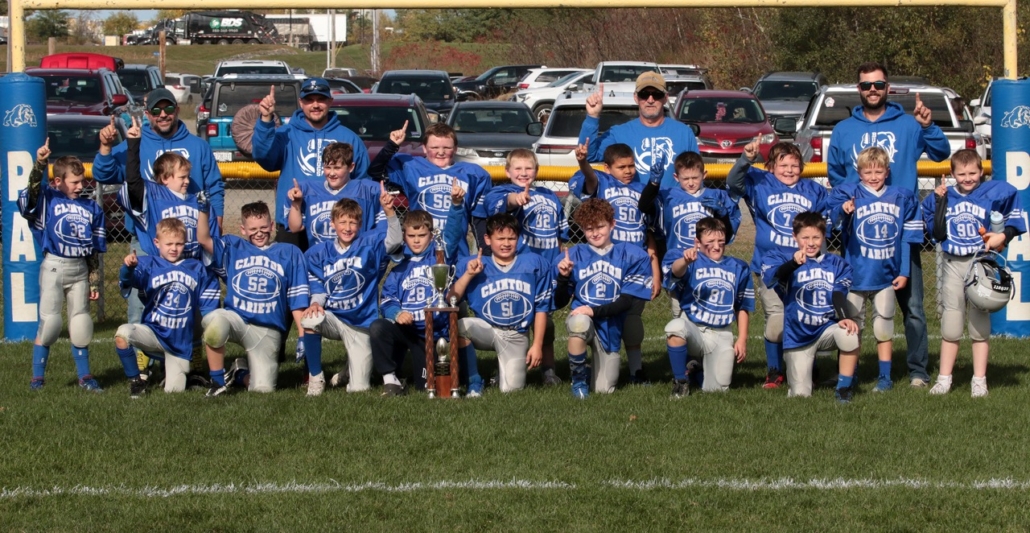Up and Down the Kennebec Valley: Revolution affects Clinton residents
 by Mary Grow
by Mary Grow
As promised, this article will start with information on Samuel Varnum and Solomon Whidden (or Whitten), Revolutionary War veterans named in Major General Carleton Edward Fisher’s 1970 history of Clinton, Maine. Their (incomplete, as usual) stories will be followed by information on three more veterans, Elnathan Sherwin, Isaiah Brown and Benoni Burrill.
* * * * * *
Samuel Varnum (born Feb. 17, 1747 [Fisher] or 1746 [WikiTree, whose writer adds a Jr. after his name]) in Dracut, Massachusetts, did not move to Clinton until after his Revolutionary service, Fisher wrote. He enlisted for a year in the spring of 1776, and later in 1776 for three years.
A Varnum genealogy, digitized and on line, says Varnum first enlisted as a private in a company commanded by his brother, Capt. Joseph Bradley Varnum. He and many other men from Dracut transferred to the Continental Army; Varnum joined the Ninth Continental Infantry, in a regiment the genealogist wrote was mostly Rhode Islanders and was “formerly commanded by his brother, afterwards Brigadier-General James Mitchell Varnum.”
Fisher and the genealogist listed three New York battles in which Varnum’s unit was involved: Long Island (Aug. 27, 1776), King’s Bridge (aka Kip’s Bay, Sept. 15, 1776) and Harlem Heights (Sept. 16, 1776). WikiTree references his presence in Rhode Island in May and October, 1778.
Wikipedia calls the Battle of Long Island (aka Battle of Brooklyn, Battle of Brooklyn Heights) the first major battle after the Declaration of Independence and “the largest battle of the Revolutionary War in terms of both troop deployment and combat.” The British won and thereby “gained access to the strategically important Port of New York, which they held for the rest of the war.”
Less than a month later, the British extended their territory with an amphibious attack at Kip’s Bay. Wikipedia describes 500 Connecticut militia, armed with “homemade pikes constructed of scythe blades attached to poles” instead of muskets, facing an hour’s cannonading from five British warships, followed by a British landing force of 4,000 men (and later another 9,000). Despite General George Washington’s attempts to rally them, the Americans fled.
Kip’s Bay was close to Harlem Heights, in the northwestern part of Manhattan Island. Here Washington’s forces defended their position against British troops led by Major General Henry Clinton. Wikipedia says, “The battle helped restore the confidence of the Continental Army after suffering several defeats. It was Washington’s first battlefield success of the war.”
Fisher said Varnum moved to Clinton by 1781, and might have spent most of the rest of his life there. An on-line source puts him on the Kennebec, in the area that soon became Pishon’s Ferry, in 1789 or 1790. (Pishon’s Ferry was almost opposite Hinckley, in northern Fairfield, where Route 23 now crosses the river.)
WikiTree says Varnum was in Canaan in 1790 and 1800, in Clinton in 1810 and 1820.
Fisher wrote that Varnum married Mary Parker. The genealogy says they had three daughters between Feb. 11, 1789, and July 10, 1793, and on March 4, 1795, a son, Samuel, Jr. Two of the daughters married Vassalboro men.
After 1818, Varnum received a pension. The genealogy says it was $96 annually; by the time he died in January 1828, his pension income totaled $933. 06.
This source says Mary was still living in 1820, aged 71.
* * * * * *
Solomon Whidden or Whitten, Fisher said, was born June 1, 1754. WikiTree names his birthplace as Swan Island, York County (probably the Swan Island in the Kennebec, now in Sagadahoc County).
In May, 1777, from Bath, he enlisted for three years. WikiTree lists him as a private in two Massachusetts regiments and as a Massachusetts militiaman.
Whidden’s 1835 application for a veteran’s land grant, reproduced on line, is hard to read, because of the handwriting and because he ran short of space to describe his military career and overlapped some lines. It appears to say that he was present at General John Burgoyne’s surrender (at Saratoga, New York, on Oct. 17, 1777) and was discharged at West Point, New York, after serving his full three years.
He must have come to Clinton (or thereabouts) promptly, Fisher said, because when, on Sept. 26, 1781, his marriage intentions were filed, both he and his intended, Esther Goodwin (born in Castine in 1762, WikiTree says), were listed as from Kennebec (often used to mean Kennebec County; but Kennebec County was not created until Feb. 20, 1799, so in this case probably the Kennebec Valley). WikiTree says the marriage was in Canaan.
WikiTree lists four sons and three daughters, born in Canaan between 1782 and 1799. Fisher wrote that Esther died in 1814 (April 8, 1814, WikiTree says), and Whidden later married Sarah Boyton (born about 1756), for whom your writer found no more information.
In the 1780s and 1790s, Whidden lived mostly in Canaan. Fisher found that he “built the first sawmill on what is now the Carrabassett Stream [which flows into the Kennebec at Pishon’s Ferry] sometime before 1795,” when he sold it.
When he applied for a military pension in 1820, he was in Clermont County, Ohio, Fisher said.
Fisher wrote, “In August 1826 he returned to Maine to spend the remainder of his days with his children….” In his May, 1835, land grant application, Whidden said he lived in Milburn and had been a Maine resident for more than 54 years.
Whidden died in Skowhegan on Oct. 4, 1841, aged 87.
* * * * * *
Fisher said Elnathan Sherwin was “definitely known to have served” during the Revolution, but gave no details (nor did your writer find any on line). Fisher also wrote that later, Sherwin “was a lieutenant in Clinton’s first militia company, commissioned in 1787.”
Elnathan Sherwin was born in 1737 – March 9, online sources say – in Boxford, Massachusetts. His wife was Eunice Brown, (born in Holden, Massachusetts, in 1740, or February of either 1741 or 1742), oldest daughter of Ezekiel Brown, Sr. (making Sherwin brother-in-law of Ezekiel Brown, Jr., whose life was summarized in last week’s article).
FamilySearch says the wedding was Jan. 22, 1761, in Dunstable, in northern Massachusetts. FamilySearch and Find a Grave say their first son, Elnathan, Jr., was born in 1759, in Maine or in Dunstable. Geni says Elnathan, Jr., was born in October, 1762; WikiTree says 1762, in Dunstable; Ancestry says 1763.
FamilySearch and Ancestry.com list Elnathan, Jr, as the oldest of five children, naming three daughters and a second son born between 1765 or 1766 and 1778. Birthplaces, when supplied, mention Maine (not any town) and Massachusetts.
The senior Elnathan Sherwin was approved for a lot in Clinton in December, 1772, having been clearing it since the summer.
Daughter Mary was born in 1773, Ancestry says in Concord, Massachusetts. Fisher said she married (no date) John Whidden (born on Swan Island 1771), and their three sons and one daughter (named Triphena) were born between 1799 and 1806.
WikiTree names Solomon Whidden’s youngest brother as John, born on Swan Island March 10, 1771. This source lists John and Mary Whidden’s five children, three sons (the oldest was John, Jr., born July 13, 1799) and two daughters, Triphena (born July 23, 1801) and Mary Elizabeth (born March 2, 1812).
Fisher found that when Clinton organized an infantry company in October 1787, as part of the Lincoln County militia, Sherwin was the first man to serve as lieutenant, from Oct. 25, 1787, until he “moved prior to Sept. 1791.”
The Sherwins left Clinton in 1791 and returned by 1810, Fisher said. In 1810 (probably according to the 1810 census), the family included a teen-age girl named Cleopatra, whom Fisher identified as the Sherwins’ daughter Mary’s illegitimate daughter.
By 1814, the Sherwins were in Waterville, Fisher wrote. Find a Grave says Elnathan died in March 1815, in Clinton and Eunice died Oct. 30, 1829, in Holden; both are buried in Nashua, New Hampshire.
The Waterville centennial history has many references to Elnathan Sherwin, including his service in the War of 1812 and in the Massachusetts legislature for all but two years from 1799 through 1815: this man must have been Elnathan Sherwin Jr.
* * * * * *
Another Revolutionary veteran connected with Clinton was Isaiah Brown. Your writer hopes he was not closely related to the Ezekiel Brown Jr., who was profiled last week, because Fisher said Ezekiel’s sister, Abigail, was Isaiah’s second wife.
Isaiah Brown was born June 10, 1745, in Holden, Massachusetts (per WikiTree) or June 21, 1745, in Clinton, Massachusetts (per FamilySearch). (The two towns, north of Worcester, are about 13 miles apart.) In Holden, on Nov. 8, 1770, he married Phebe Howe, born in Rutland, Massachusetts, in 1749 (WikiTree). They had one child, a daughter named Dorothy, born Sept. 2, 1773.
Phebe died July 6, 1775, and both websites say on Dec. 27, 1775, Brown married Abigail (Nabby) Brown (born in 1751 [WikiTree] or 1753 [FamilySearch and Fisher]), in her home town of Concord, Massachusetts (well east of his former home).
Brown was a minuteman in Holden; his regiment responded to the events of April 19, 1775. At some point, he became a lieutenant in the Continental Army’s 18th Massachusetts Bay Provincial Regiment.
Wikipedia says this regiment was among those in the siege of Boston, until it was disbanded “at the end of 1775.” (The British did not evacuate Boston until mid-March 1776.)
Assuming accuracy of sources, the Browns soon left Massachusetts for Clinton. Their first son, Thomas, was born there Sept. 28, 1776, WikiTree and FamilySearch say (Find a Grave says Sept. 19, 1776).
FamilySearch (but not WikiTree) says Isaiah and Abigial had eight more children, five girls (the oldest was named Phebe) and three boys, born between 1778 and 1796. The site claims two girls, Sarah (1782) and Polly (1784), were born in Clinton, the rest in Holden.
Fisher wrote that Brown opened what might have been Clinton’s first tavern around 1800 at current Benton Station, and had a store there in 1807. He served briefly as a selectman in 1803.
Brown died in November 1815, and, FamilySearch says, is buried in Ames Cemetery, in Benton (formerly part of Clinton). Abigail died in Clinton in September, 1832.
Find a Grave says 84 Browns (from at least two families) are buried in Ames Cemetery. They include Isaiah and Abigail and their youngest son, Luke (Jan. 24, 1795 – October 28, 1890), and his wife, Mary “Polly” (Gilman) Brown (Jan. 21, 1795 – Jan. 18, 1866).
* * * * * *
Benoni Burrill was born Sept. 7, 1756, in Abington, Massachusetts, son of Thomas and Grace (Garnett) Burrill. (He was probably related to the Nathaniel Burrell profiled last week; your writer hasn’t the patience to untangle the genealogy.)
WikiTree’s biography says Burrill’s first military service was for three days in April 1775, when he was a private in a company that responded on April 20 to the April 19 events at Lexington and Concord. WikiTree does not explain why the company marched east toward Marshfield instead of heading north toward the Boston area.
On May 1, 1775, Burrill enlisted and served for three months plus eight days. On May 15, 1777, when he was 21 years old, he joined the Continental Army from a North Abington company, enlisting for three years or the duration of the war and serving as a fifer and a drummer.
Discharged Aug. 9, 1780, he re-enlisted and served in 1783 and 1784 (British commander Charles Cornwallis had surrendered at Yorktown on Oct. 19, 1781) at Castle Island and Governor’s Island, in Boston Harbor. FamilySearch says he was promoted to corporal during this time.
FamilySearch says Burrill was always a musician. The site describes Fisher’s statement that he was “promoted to quarter gunner” as a mistake, due to a mistranscription of a hand-written record, which also changed his first name from Benoni to Benjamin.
Burrill and Lydia Ripley (born Feb. 26, 1761, in Weymouth, Massachusetts, about eight miles north of Abington) were married in Abington on May 26 or May 27, 1779. FamilySearch says they had six sons (including Benoni, Jr.) and five daughters between 1782 and 1803, all born in Abington.
Burrill died April 9, 1814, in either Clinton (Fisher and WkiTree) or Corinna (FamilySearch). His widow died June 12, 1852, in Corinna, where both are buried.
Main sources
Fisher, Major General Carleton Edward, History of Clinton, Maine (1970)
Websites, miscellaneous.


